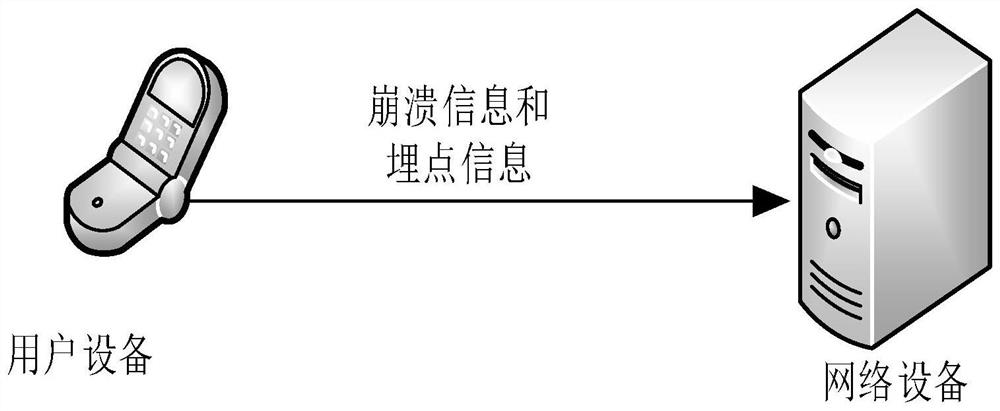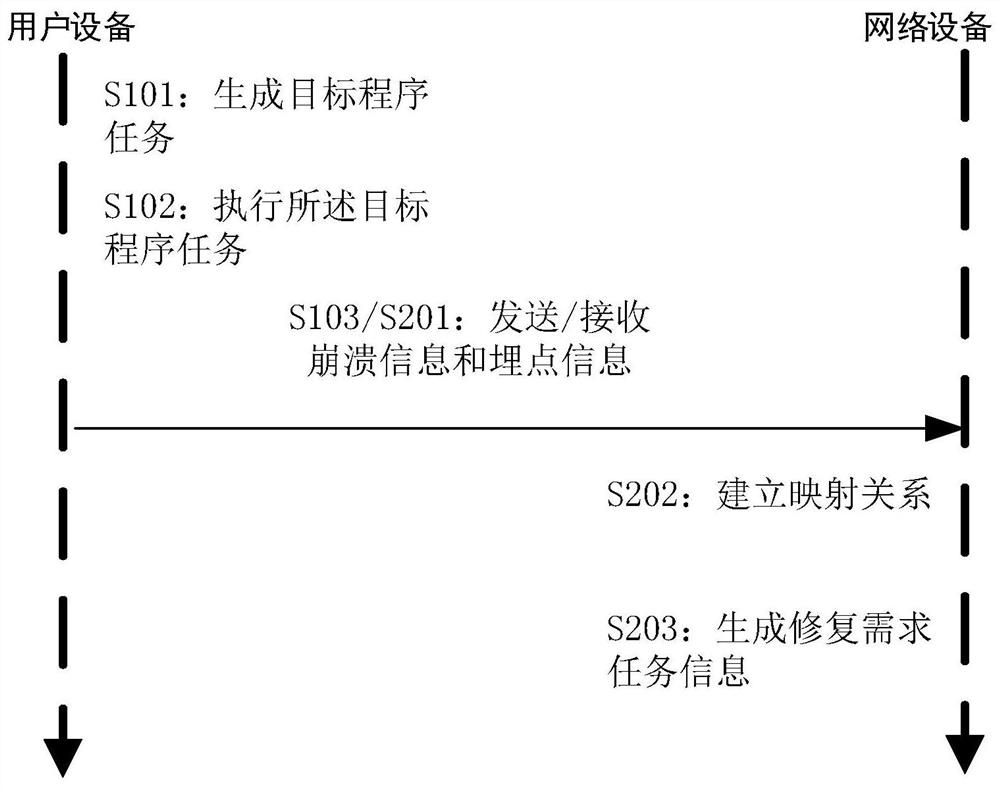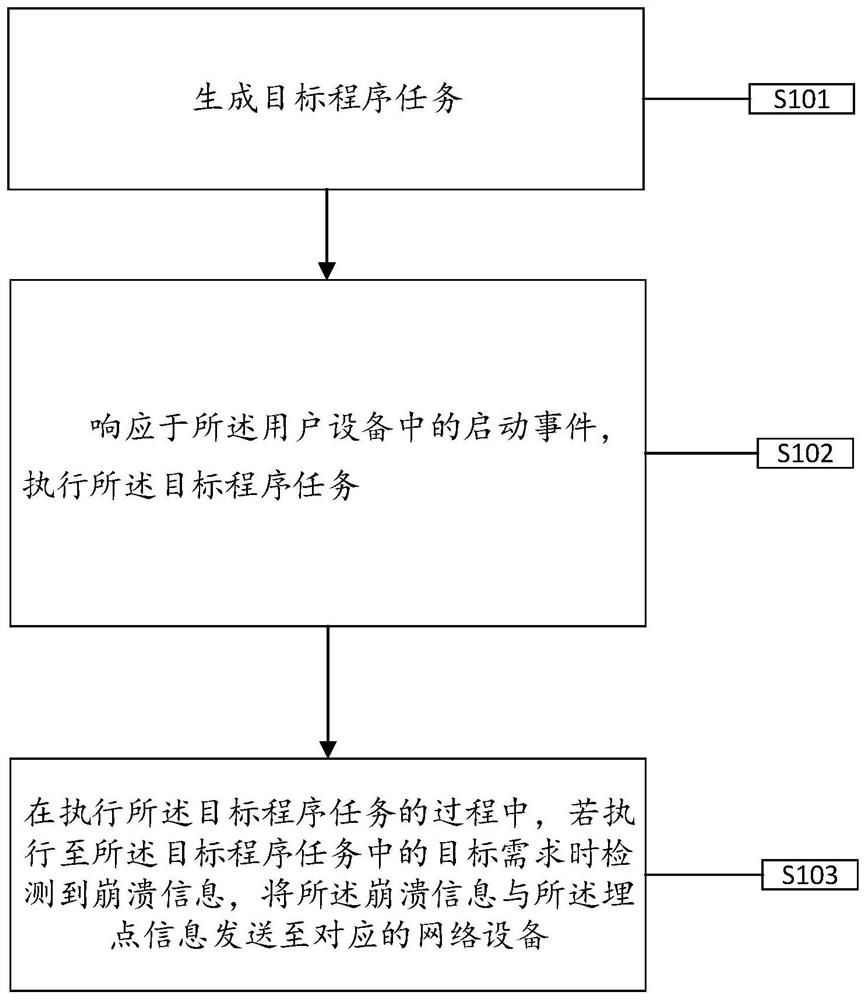Method and equipment for processing crash information
A technology for user equipment and network equipment, applied in the field of communication, can solve problems such as code errors, and achieve the effect of improving efficiency
- Summary
- Abstract
- Description
- Claims
- Application Information
AI Technical Summary
Problems solved by technology
Method used
Image
Examples
Embodiment Construction
[0040] The application will be described in further detail below in conjunction with the accompanying drawings.
[0041] In a typical configuration of the present application, the terminal, the device serving the network and the trusted party all include one or more processors (CPUs), input / output interfaces, network interfaces and memory.
[0042] Memory may include non-permanent storage in computer readable media, in the form of random access memory (RAM) and / or nonvolatile memory such as read only memory (ROM) or flash RAM. Memory is an example of computer readable media.
[0043] Computer-readable media, including both permanent and non-permanent, removable and non-removable media, can be implemented by any method or technology for storage of information. Information may be computer readable instructions, data structures, modules of a program, or other data. Examples of computer storage media include, but are not limited to, phase change memory (PRAM), static random acce...
PUM
 Login to View More
Login to View More Abstract
Description
Claims
Application Information
 Login to View More
Login to View More - R&D
- Intellectual Property
- Life Sciences
- Materials
- Tech Scout
- Unparalleled Data Quality
- Higher Quality Content
- 60% Fewer Hallucinations
Browse by: Latest US Patents, China's latest patents, Technical Efficacy Thesaurus, Application Domain, Technology Topic, Popular Technical Reports.
© 2025 PatSnap. All rights reserved.Legal|Privacy policy|Modern Slavery Act Transparency Statement|Sitemap|About US| Contact US: help@patsnap.com



